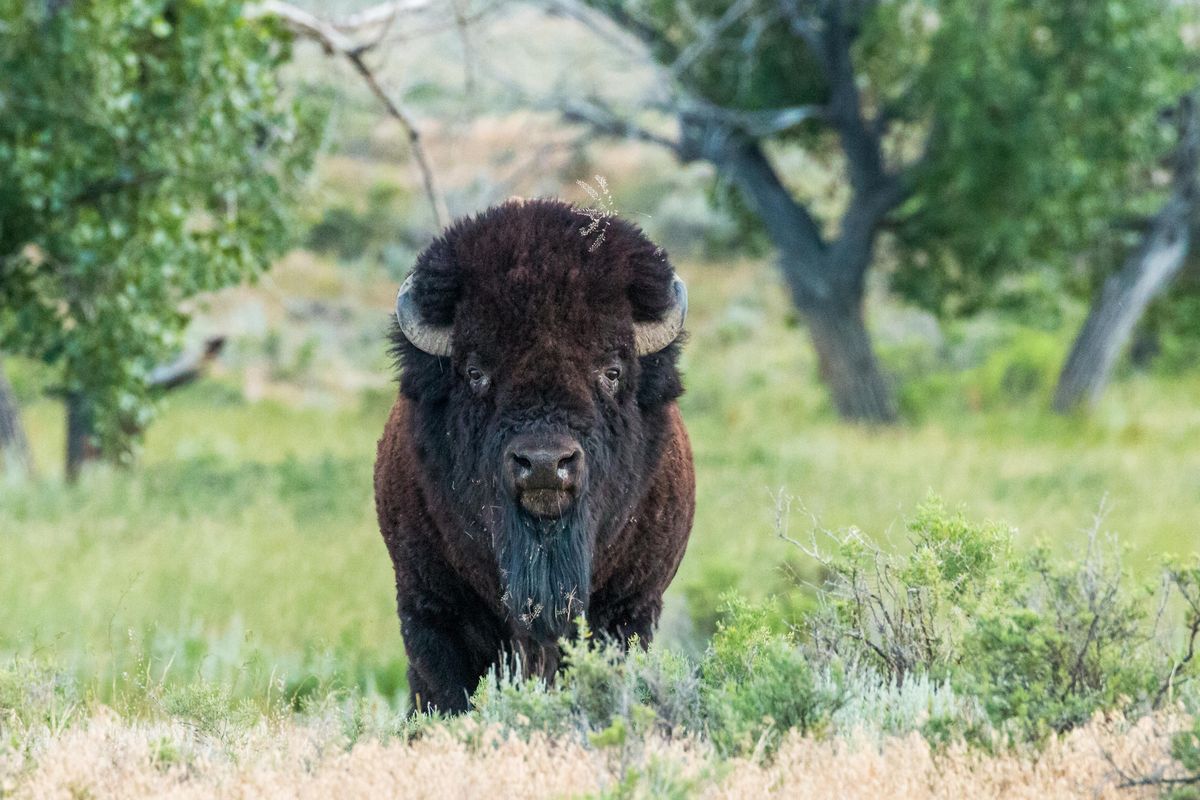Bison help prairie get back to nature

Springtime on the prairie is loud. Streams splish and splash. Frogs peep and sing. Prairie dogs chirp. Greater sage-grouse and other birds such as short-eared owls and northern harriers return from their migrations, then claim their territories with bubbling, booming noises at dawn.
“It’s amazingly immersive in terms of sound,” says conservation ecologist Andy Boyce.
He would know. As a scientist working for the Smithsonian Conservation Biology Institute, he lives and works on the American Prairie Reserve, a massive nature reserve in Montana that, so far, spans nearly 500,000 acres. The American Prairie Reserve is a nonprofit organization. Its goal is to preserve several million acres, including public land and private land purchased from willing owners. Conservationists are returning this land (much of it previously used for raising cattle) to its natural state. It’s like a science experiment on a massive scale – about the size of Connecticut.
In 2005, conservationists reintroduced herds of bison to the now-wild land. This past winter, the bison population was more than 800 animals. The big species has an equally big impact on the land, says Boyce.
His job is to study what’s happening to all the other prairie animals, such as long-billed curlews, since the return of the bison. These migratory shorebirds rely on three types of habitats on the prairie – areas with short grass, long grass and mud – for completing their breeding cycle each year. As bison go about their business, they create a “heterogeneous” or varied landscape, which helps the birds, Boyce says.
“All of these animals co-evolved over [thousands] of years,” he says. “When the land was used entirely for ranching, cattle changed the land in a different way that doesn’t support what the birds need.”
This spring, as the grass and the cottonwood trees “green up” and petite prairie flowers bloom in blue, white and yellow, Boyce has been busy. He counts birds early in the morning, doing surveys related to native and nonnative grass, and setting up motion-sensing camera traps to document mammals such as cougars, swift fox, pronghorn and black-footed ferrets. He also carefully traps nesting long-billed curlews, then fits them with “GPS backpacks” so scientists can track them on the prairie.
Grasslands such as the one conservationists are cultivating at the American Prairie Reserve used to be one of Earth’s most rich environments, but now are one of the most threatened. Humans have taken over much of this type of environment for their own use because it works well for agriculture and development.
In addition to serving as a home for many plants and animals, healthy prairies help sustain the planet. Prairie vegetation and their extensive root systems do a huge amount of what Boyce calls “carbon sequestration.” That means they take in large quantities of carbon dioxide, removing it from the atmosphere, and doing a “deep service” in terms of fighting climate change, he says.
Another reason to preserve the prairie? So future generations can experience the land the way it was for thousands of years before human development took over, like with herds of wild bison roaming free. The American Prairie Reserve gives us “the opportunity to see the land the way Lewis and Clark saw it, and how Native Americans interacted with it for thousands of years,” Boyce says. “And we almost lost it forever.”
For more information, go to americanprairie.org and nationalzoo.si.edu/news/restoring-americas-prairie. The reserve is open for recreation, including camping, fishing and birding. For details about visiting, go to americanprairie.org/visit.